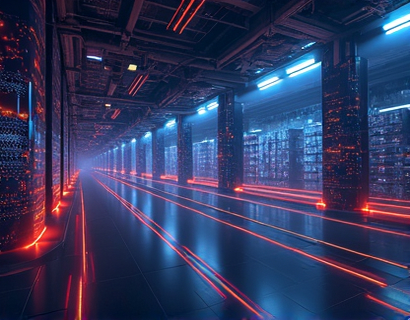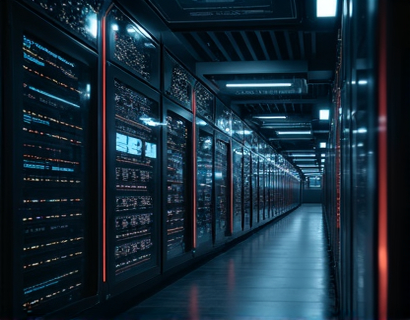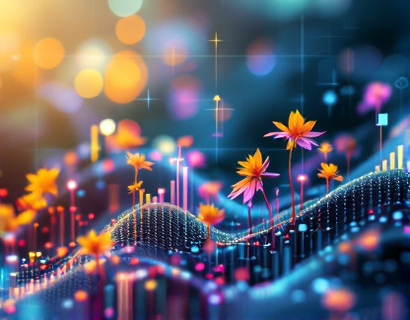Maximizing Aquaculture Business Success with Advanced Software Solutions
In the rapidly evolving landscape of aquaculture, business owners and managers face numerous challenges that can impact the success and sustainability of their operations. From managing complex logistics and resource allocation to ensuring compliance with environmental regulations, the demands on aquaculture businesses are more stringent than ever. Advanced software solutions have emerged as critical tools that can streamline operations, enhance productivity, and optimize resource management, providing aquaculture professionals with the edge they need to thrive in a competitive industry.
The integration of technology in aquaculture is not just a trend but a necessity. Modern software solutions are designed to address specific pain points within the industry, offering comprehensive tools that cater to various aspects of aquaculture management. These solutions range from water quality monitoring and feeding management to inventory control and financial tracking. By leveraging these advanced tools, aquaculture businesses can achieve higher efficiency, reduce operational costs, and improve overall performance.
Streamlining Operations with Automation
One of the primary benefits of advanced software in aquaculture is the automation of routine tasks. Automation reduces the reliance on manual processes, which are prone to errors and inefficiencies. For instance, automated feeding systems can precisely control the amount and timing of feed dispensed to aquatic animals, ensuring optimal growth while minimizing waste. This not only saves time but also reduces feed costs and environmental impact.
Similarly, automated monitoring systems can continuously track water parameters such as temperature, pH, and dissolved oxygen levels. These systems can alert managers to any deviations from optimal conditions, enabling prompt corrective actions. By maintaining ideal water conditions, businesses can prevent health issues in their stock, reducing mortality rates and improving overall productivity.
Enhancing Productivity through Data Analytics
Data analytics plays a crucial role in modern aquaculture management. Advanced software solutions collect and analyze vast amounts of data generated from various operations, providing insights that can inform decision-making. For example, by analyzing growth rates, feed conversion ratios, and health metrics, managers can identify trends and patterns that indicate areas for improvement. This data-driven approach allows for more informed and strategic decisions, leading to enhanced productivity and profitability.
Inventory management is another area where data analytics shines. By tracking stock levels, input usage, and output quantities, software can optimize inventory levels, reducing the risk of overstocking or stockouts. This ensures that resources are used efficiently, minimizing waste and maximizing resource availability when needed.
Optimizing Resource Management
Resource optimization is vital for the sustainability and profitability of aquaculture businesses. Advanced software solutions help manage resources more effectively by providing real-time visibility into resource usage. For instance, water usage can be monitored and optimized to ensure minimal waste, while energy consumption can be tracked to identify opportunities for cost savings. By optimizing resource use, businesses can reduce operational costs and minimize their environmental footprint.
Additionally, software can assist in managing labor resources. Scheduling tools can optimize staff schedules based on operational needs, ensuring that the right number of personnel are available at the right times. This not only improves efficiency but also enhances employee satisfaction by providing more predictable work schedules.
Ensuring Compliance and Sustainability
Compliance with environmental regulations and industry standards is a critical aspect of aquaculture business management. Advanced software solutions can help ensure that operations remain compliant by providing tools for tracking and reporting. For example, software can generate detailed reports on water quality, waste management, and chemical usage, making it easier to demonstrate compliance to regulatory bodies. This not only helps avoid penalties but also builds trust with customers and stakeholders.
Sustainability is increasingly becoming a key factor in the success of aquaculture businesses. Software can support sustainability efforts by monitoring and managing practices that reduce environmental impact. For instance, integrated systems can track and optimize the use of renewable energy sources, such as solar or wind power, reducing reliance on fossil fuels. By adopting sustainable practices, businesses can appeal to a growing market of environmentally conscious consumers.
Improving Customer Engagement and Sales
In addition to operational efficiencies, advanced software can also enhance customer engagement and sales. Customer relationship management (CRM) tools integrated into aquaculture software platforms allow businesses to manage customer interactions more effectively. These tools can track customer preferences, purchase history, and feedback, enabling personalized marketing and improved customer service. By building stronger relationships with customers, aquaculture businesses can increase customer loyalty and drive repeat sales.
E-commerce integration is another valuable feature for modern aquaculture businesses. Online platforms can be seamlessly integrated with management software, allowing businesses to sell their products directly to consumers or other businesses. This not only expands the market reach but also reduces dependency on intermediaries, potentially increasing profit margins.
Case Studies and Real-World Applications
Several aquaculture businesses have successfully implemented advanced software solutions, achieving significant improvements in various aspects of their operations. For example, a large-scale fish farm in Asia adopted an integrated management system that included automated feeding, water quality monitoring, and inventory control. As a result, the farm saw a 20% reduction in feed costs, a 15% decrease in water usage, and a 10% increase in fish yield. These improvements not only enhanced profitability but also reduced the farm's environmental impact.
Another case study involves a group of small-scale shrimp farmers who implemented a cloud-based software solution for managing their operations. The software provided real-time data on water parameters, feeding schedules, and health monitoring. Farmers reported a 25% reduction in mortality rates and a 10% increase in growth rates, leading to higher revenues and more sustainable farming practices.
Challenges and Considerations
While the benefits of advanced software solutions in aquaculture are clear, there are several challenges and considerations that businesses should be aware of. One major challenge is the initial cost of implementing these systems. High-quality software solutions can be expensive, and smaller businesses may find it difficult to justify the investment. However, the long-term benefits in terms of cost savings and increased productivity often outweigh the initial costs.
Another consideration is the need for training and support. Employees must be adequately trained to use the software effectively, and ongoing support is essential to address any issues that arise. Businesses should look for software providers that offer comprehensive training programs and reliable customer support.
Compatibility with existing systems is also a critical factor. Integrating new software with legacy systems can be challenging, but it is essential for a smooth transition. Businesses should ensure that the software they choose is compatible with their current infrastructure or is capable of seamless integration.
Future Trends in Aquaculture Software
The aquaculture software market is rapidly evolving, with new technologies and innovations emerging regularly. One trend to watch is the increasing use of artificial intelligence (AI) and machine learning in aquaculture management. AI can enhance predictive analytics, enabling more accurate forecasts of fish health, growth rates, and market trends. Machine learning algorithms can also optimize operational processes by learning from historical data and adapting to new inputs.
Another trend is the integration of Internet of Things (IoT) devices, which can provide even more granular data on various aspects of aquaculture operations. IoT sensors can monitor environmental conditions, equipment performance, and animal behavior in real-time, offering unprecedented levels of insight and control.
Blockchain technology is also gaining attention in the aquaculture industry, particularly for traceability and transparency. Blockchain can ensure that every step of the supply chain, from farm to table, is recorded and verifiable, enhancing consumer trust and compliance with regulatory requirements.
Conclusion
Advanced software solutions are transforming the aquaculture industry, offering powerful tools that streamline operations, enhance productivity, and optimize resource management. By embracing these technologies, aquaculture businesses can overcome challenges, comply with regulations, and meet the growing demand for sustainable and high-quality aquatic products. While there are challenges to consider, the long-term benefits of adopting advanced software make it a worthwhile investment for any serious aquaculture operation.










































